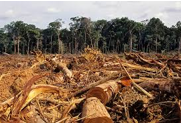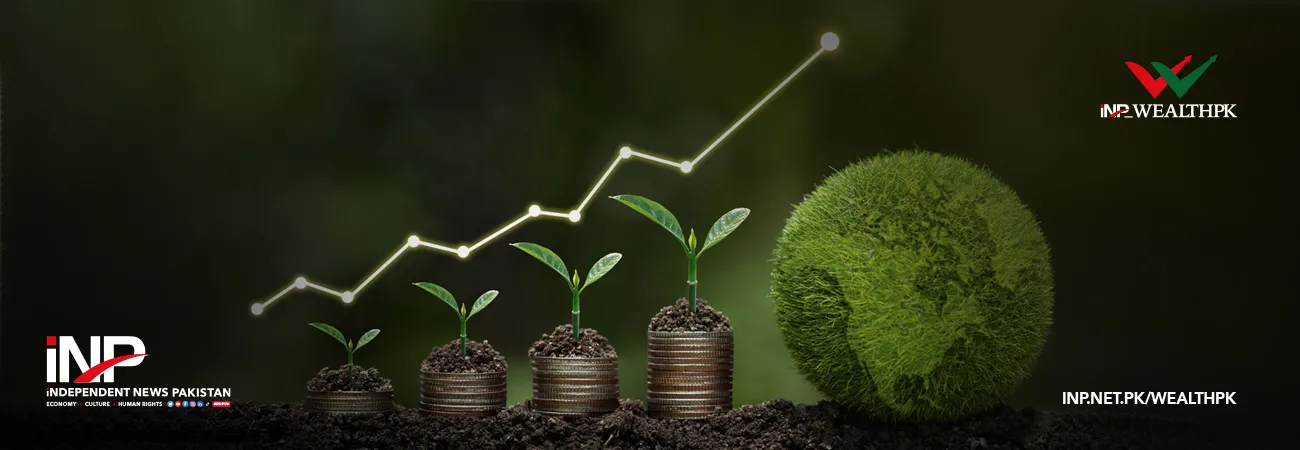INP-WealthPk
Faiza Tehseen
Tackling deforestation and land degradation is crucial to achieving the sustainable green growth goals in Pakistan.

"It is the key to mitigating climatic impacts, maintaining biodiversity and strengthening livelihood support,” said Muhammad Saleem, spokesman of the climate change and environmental coordination ministry. He said forests are active carbon sinks, and to achieve carbon neutrality, tackling deforestation was imperative. “Forest protection is not merely an environmental issue but an economic necessity. Reforestation and aforestation are vital to restore degraded lands, improve soil health, enhance water quality and ensure a resilient ecosystem.” Saleem said adoption of sustainable forestry practices was necessary to open a window for economic opportunities, ensure natural resource conservation and control the heat-trapping carbon emissions in the atmosphere.
He also called for promotion of agro-forestry – a technique in which trees are planted alongside crops. “This integration helps in promoting sustainable land use, enhancing food security and tackling soil erosion.” The climate change ministry’s spokesman also called for effective policies to curb illegal logging and land conversion. “Use of smart technologies is vital to monitor deforestation.” He pointed out that local communities were often the best stewards for forest protection. “Their inherited knowledge and commitment are invaluable to fight deforestation.” Highlighting the need to overcome deforestation and ensure green growth in Pakistan, Muhammad Atif Majeed, Deputy Director of Pakistan Forest Institute, Peshawar, said the country was grappling with both economic and environmental challenges.
“So, environmental sustainability is critical to ensure long-term economic stability.” He said Pakistan was facing significant ecological and economic threats due to continuous deforestation, undermining the green growth aspiration. Speaking to WealthPK, Majeed said that green growth encompassed investment in clean energy, support for small-scale renewable energy projects, investment in green and affordable transportation, promotion of high-speed rail and reduction in pollution levels. He added that green growth is a low-carbon, resource efficient and circular economic model. “Mostly, there are four main green growth framework indicators – environmental quality of life, environmental and resource productivity, policy responses and economic opportunities.”
Majeed said major forest types in Pakistan included riverine forests, coastal mangroves, dry temperate conifer forests, moist temperate conifer forests, sub-tropical forests and irrigated plantations, including linear ones. “Some of the world’s unique forests – oak, juniper, deodar and chilgoza forests – grow in Pakistan.” He said that ecosystem services of forests significantly impacted various human and environmental aspects in different forms, including providing medicines, regulating water flows, controlling land erosion and creating climate resilient safety nets. “Forests are also a great source of sustainable income for the forest dwelling communities.”
Majeed said that as per land cover Atlas of Pakistan, published by Pakistan Forest Institute in 2012, the forest cover (excluding the alpine pastures) stood at 20.1%, 2.7%, 4.6%, 1.4% and 4.8% in Khyber Pakhtunkhwa, Punjab, Sindh, Balochistan and Gilgit-Baltistan, respectively. “In the federal capital, the total forest cover is 22.6%.” He said it was high time the policymakers focused on deforestation and degradation issues. “Though efforts have been made both at the central and provincial levels to improve the forest cover, there is a need to introduce more better strategies. Pakistan can emulate the Chinese example to increase the forest cover and reduce land degradation,” Majeed emphasised.
Credit: INP-WealthPk




